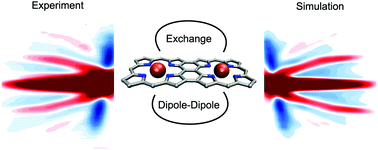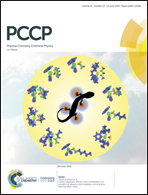ELDOR-detected NMR beyond hyperfine couplings: a case study with Cu(ii)-porphyrin dimers†
Abstract
The pulse EPR method ELDOR-detected NMR (EDNMR) is applied to two Cu(II)-porphyrin dimers that are suitable building blocks for molecular wires. One of the dimers is meso–meso singly linked, the other one is β, meso, β-fused. We show experimentally and theoretically that EDNMR spectra contain information about the electron–electron couplings. The spectra of the singly linked dimer are consistent with a perpendicular arrangement of the porphyrin planes and negligible exchange coupling. In addition, the resolution is good enough to distinguish 63Cu and 65Cu in frozen glassy solution and to resolve a metal-ion nuclear quadrupole coupling of 32 MHz. In the case of the fused dimer, we observe so far unreported signal enhancements, or anti-holes, in the EDNMR spectra. These are readily explained in a generalized framework based on [Cox et al., J. Magn. Reson., 2017, 280, 63–78], if an effective spin of S = 1 is assumed, in accordance with SQUID measurements. The positions of the anti-holes encode a zero-field splitting with |D| = 240 MHz, which is about twice as large as expected from the point-dipole approximation. These findings demonstrate the previously unrecognized applicability and versatility of the EDNMR technique in the quantitative study of complex paramagnetic compounds.

- This article is part of the themed collections: Celebrating our 2020 Prize and Award winners and 2019 PCCP HOT Articles


 Please wait while we load your content...
Please wait while we load your content...